Tel Aviv airport, the gateway for every pilgrim that arrives in the Holy Land, is located in the neighboring municipality of Lod – formerly Lydda or Diospolis. In this city, St. Peter stopped to cure Aeneas, a sick disciple (Acts 9:32-35), while traveling from Jerusalem to the coast.
In Lod/Lydda, a venerable tradition also locates the tomb of St. George. Epiphanius the Monk (7th-8th century) writes that near Ramla, in the city of Diospolis, the remains of the “Great Martyr St. George” are preserved.
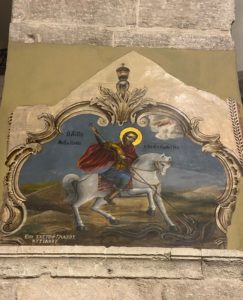
Saint George, Church of the Holy Sepulchre photo by Henri Gourinard
St. George, whom we have just celebrated in the Gregorian calendar, last April 23, is an extremely popular saint among Christians in the Middle East. There are few Christian families that do not have a son by this name: be it Jiries, Gorgis, Kevork, Khader or simply George(s). In addition, the lintels of many Christian houses in Palestine are decorated with the figure of the holy knight slaying the dragon.
Chains are attached to the north wall of the present Church. In popular tradition, St. George chained the dragon with them. Local Christians usually wear them around their necks out of devotion.
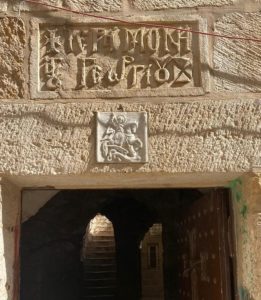
Lindel of a house in the Old City, Jerusalem photo by Henri Gourinard
Very little is known about St. George: he must have been a Roman soldier from Cappadocia, in present-day Turkey. He was martyred during the Great Persecution of Diocletian, in the first decade of the fourth century, but it is not clear that his martyrdom took place in Palestine since it is not mentioned in The Martyrdoms of Palestine, nor in the History of the Church, works of Eusebius, bishop of Caesarea and contemporary to the facts.
The figure of St. George, in a certain sense, has been a victim of his popularity. Many traditions were grafted on the trunk of some historical facts. The dragon defeated by the saint, for example, was identified by popular piety as a figure of the pagan Roman Empire defeated by the Christian faith.
About his martyrdom, one tradition states that he died dismembered, tied to a wheel. The pilgrim Epiphanius recalls that, in the Church of Lydda, this wheel hung from the gate, between the nave and the presbytery, as a relic of the martyrdom.
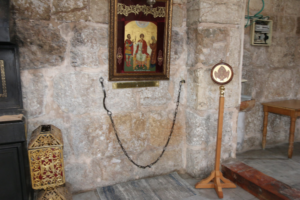
The chains of St. George photo by Henri Gourinard
The reduction in the number of Christians in the area that coincided with the foundation of a new capital of Palestine by the Umayyad caliph (717) caused the Church of St. George of Lydda to fall into disuse. It lay in ruins when the Crusaders arrived in the Holy Land in 1099.
The Crusader knights, logically, placed themselves under the patronage of that military saint and erected the ruins of the ancient Church of Lod/Lydda in his honor.
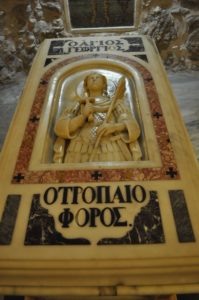
The Tomb photo by Henri Gourinard
The Church of Lydda remained in ruins and it was not before the end of the 19th century that the Greek Orthodox Patriarchate restored it. A staircase leads to a crypt where the tomb of the saint is venerated. The pilgrims dip some fabrics in the oil that always covers the tomb of St. George to take them as souvenirs. The memory of the saint according to the Julian calendar attracts many Arab Christian families from all over Palestine and Israel, Orthodox or Catholic.
By Henri Gourinard
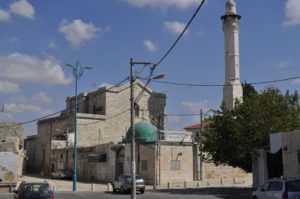
The Church photo by Henri Gourinard
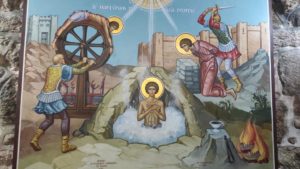
Martyrdom of St. George in the Church of Lod photo by Henri Gourinard
